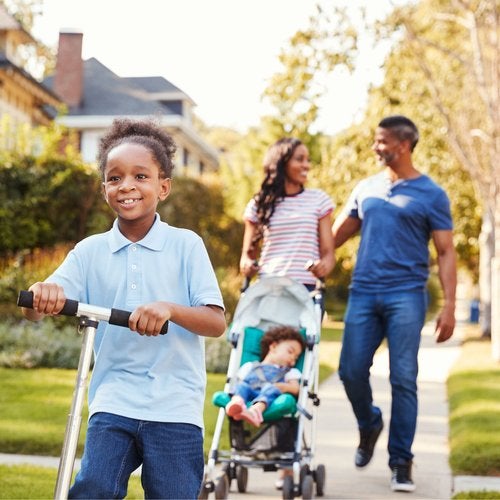 Strolling to a café for breakfast, walking around the corner to yoga—isn’t that the life? Before you buy or rent, here’s how to suss out whether a neighborhood you’re interested in will let you get out from behind the wheel.
Strolling to a café for breakfast, walking around the corner to yoga—isn’t that the life? Before you buy or rent, here’s how to suss out whether a neighborhood you’re interested in will let you get out from behind the wheel.See what locals have to say.
When it comes to picking a neighborhood, do a search for “What Locals Say.” It is a good way to find stats that show what percentage of locals say the following about their neighborhood:
- It’s walkable to restaurants
- It’s walkable to grocery stores
- There are sidewalks
- People would walk alone at night
- Streets are well-lit
- Car is needed
So, for example, in Boston’s very walkable Beacon Hill neighborhood, 93% of residents say there are sidewalks, 92% say it’s walkable to restaurants, and only 18% say a car is needed.
Scope out the commute.
A truly walkable neighborhood is one where you can get in and out of the neighborhood without a car. Studies show that the closer you live to transit networks (bus, train, bike share), the more likely you are to walk. Map the route to your workplace in public transit mode. How long is the walk to the bus or train? How long is the ride?
You can also get useful commute intel from locals with another quick search. Millions of locals have been asked what their commute is like, so you’ll find quotes like this one from a resident of New York City’s Financial District: “Close to every train you could want to get anywhere in the city. My commute is super easy—10 minutes to SoHo by train [or a] 20-minute walk.”
Check out local dining spots
To find out whether you can easily step out for a bite to eat, take a peek at Yelp or Google or whatever Maps you prefer for the home listing. That’ll give you a sense of how many restaurants are within walking distance. And keep in mind, the more restaurants there are nearby, the more your neighbors will likely be out and about, too.
Take a virtual walk
Before you hoof it over to a potential new neighborhood, use Google Street View to explore it virtually. On any home’s page, you’ll find a gallery of maps right below the house photos on most home search sites. One of these links to the Google Street View at the home’s front door. Take a spin through the neighborhood. This will give you a good idea of what getting around could look like and what’s nearby. Just remember there’s no telling what time of day (or year) the images were captured. A sleepy-looking street could be exactly that: a street at 6 a.m. on a wintry Saturday.
Drop by at different times of day
All that online research is perfect for narrowing your neighborhood list down, but nothing replaces a real-life visit. In fact, we suggest a few. Check out the area on evenings and weekends, and also in the middle of a weekday. See whether the cafes and shops you’d walk to are open and active during the times you’d use them, and whether the routes you’d take are pleasant and accessible at those times, too.
Be on the lookout for:
- Wide, accessible sidewalks: Walkability isn’t just about distance. Wide sidewalks are key to feeling safe walking around.
- Shade: Trees near the sidewalks encourage locals to choose walking over driving.
- Street furniture: Places to sit and rest tells you that the city has thought about walkability and has made investments to encourage it. Benches, picnic tables, and other places to catch your breath are a good sign.
- Crosswalks and pedestrian signals: Most intersections have these, but how pedestrian-friendly are they? Look for signals with buttons for walkers to push and wide, well-marked crosswalks.
- Street lights: Safety first—people won’t walk where they can’t see or be seen.
Do a “near me” search
When you’re in the neighborhood, search Google Maps for “restaurants near me” or “coffee near me.” Check out a few of the places. Are the walks reasonable? Do the routes have pedestrian-friendly infrastructure? Take some exploratory walks to the places you’d be likely to visit. Ask yourself: Do I enjoy walking around here? If it feels right to you, it just might be the right place to call home.